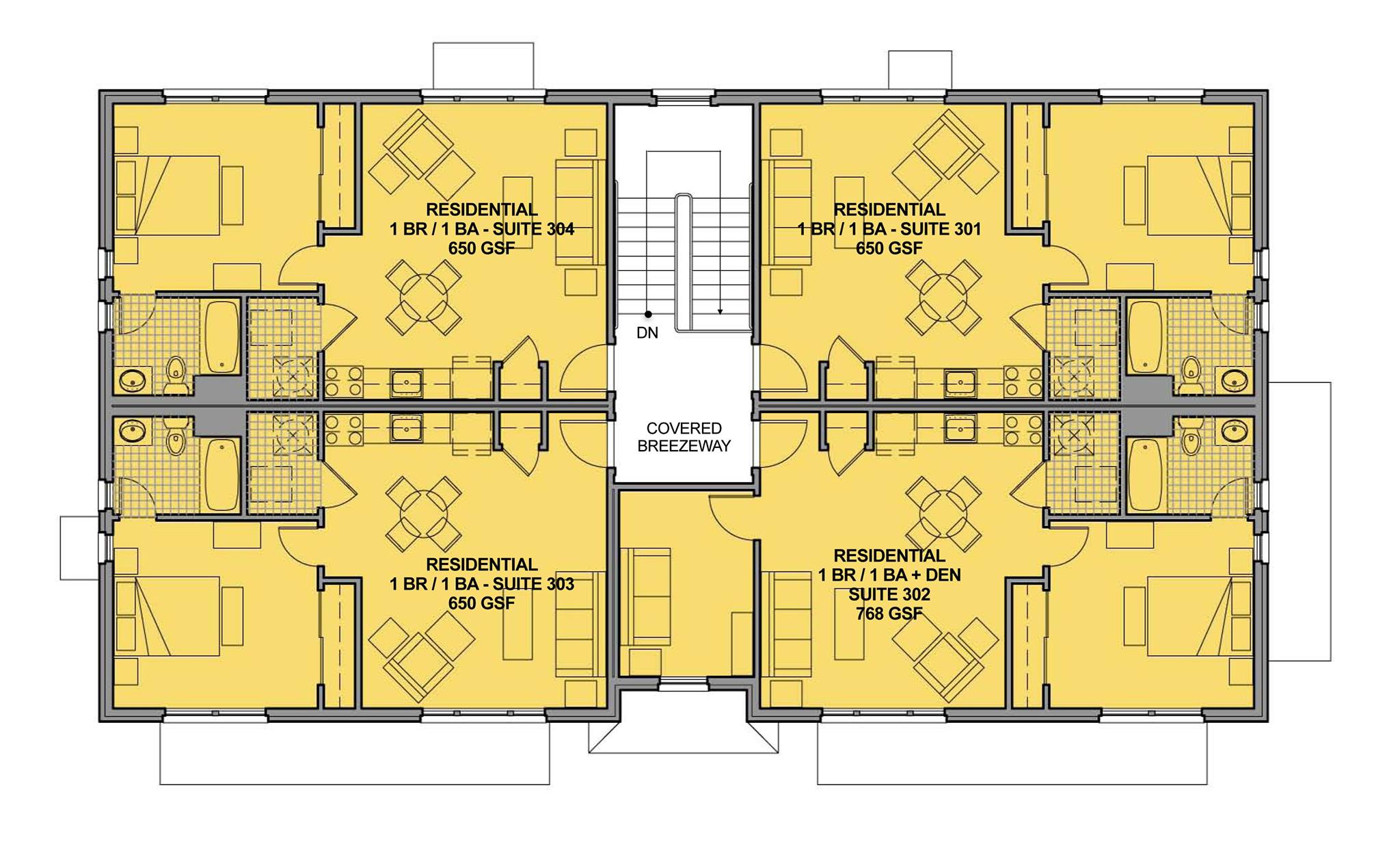Reprising this post because folks keep asking me about it via email, etc.
These thresholds fit a three story apartment building or mixed use building into the fire/life safety requirements of the International Building Code (IBC) and the accessibility requirements of the Fair Housing Act.
1. All ground floor units are accessible/adaptable (minimum one unit). 2. TYPE V wood frame construction with fire sprinklers. 3. When built with a single stair, upper stories are limited to four units each. (more than 4 units on a floor and two stair will be required separated by a rated corridor at least 1/2 the diagonal of the building floor plate in length --1/3 for buildings with fire sprinklers.) 4. 2nd floor units are limited in size to 125′ max. exiting distance from the furthest point inside the unit to the entry door. 5. 3rd floor units are limited in size to 125′ max. exiting distance from the furthest point inside the unit to the entry door. (3rd floor units can be two story units with internal stairs as long as the max. exiting distance of 125' is observed).
Code research and design by David Kim
A comment from Will Dowdy:
This is a good summary. It’s probably worth being explicit about that ground floor unit. If you don’t have a unit on the ground floor, the requirement for accessibility is shifted to the second floor of the building, which means that you’re stuck with an elevator. BIG problem. This design is an elegant solution.




